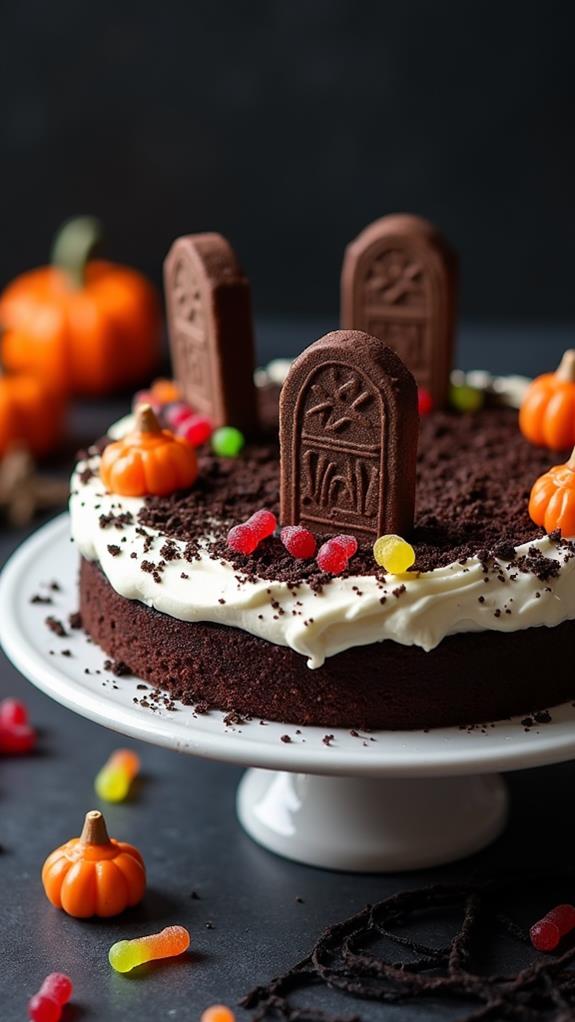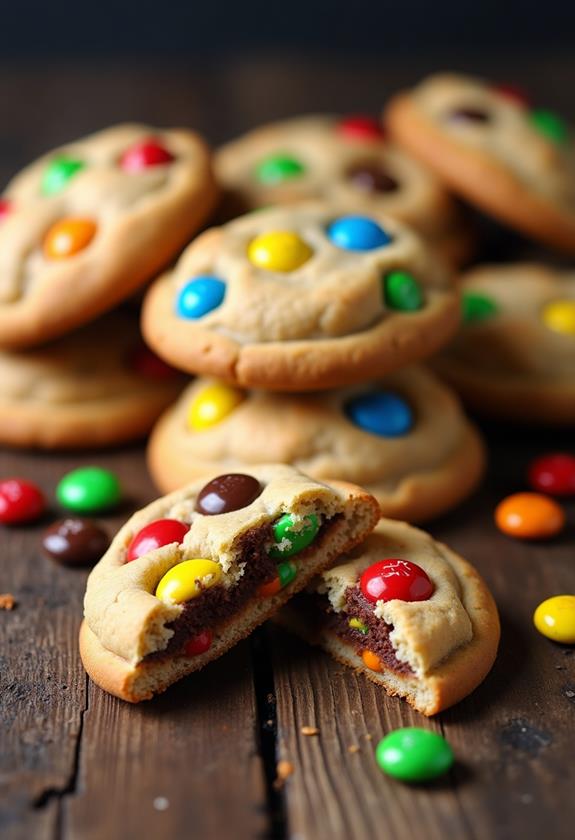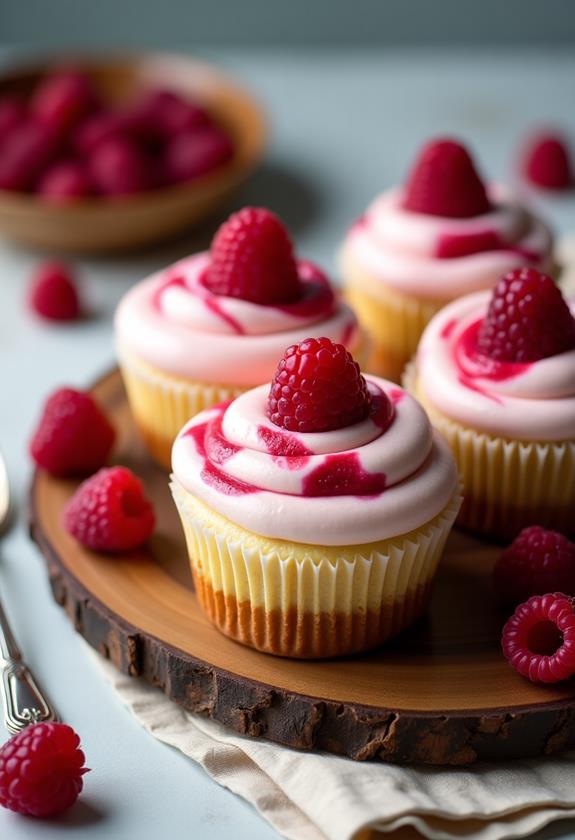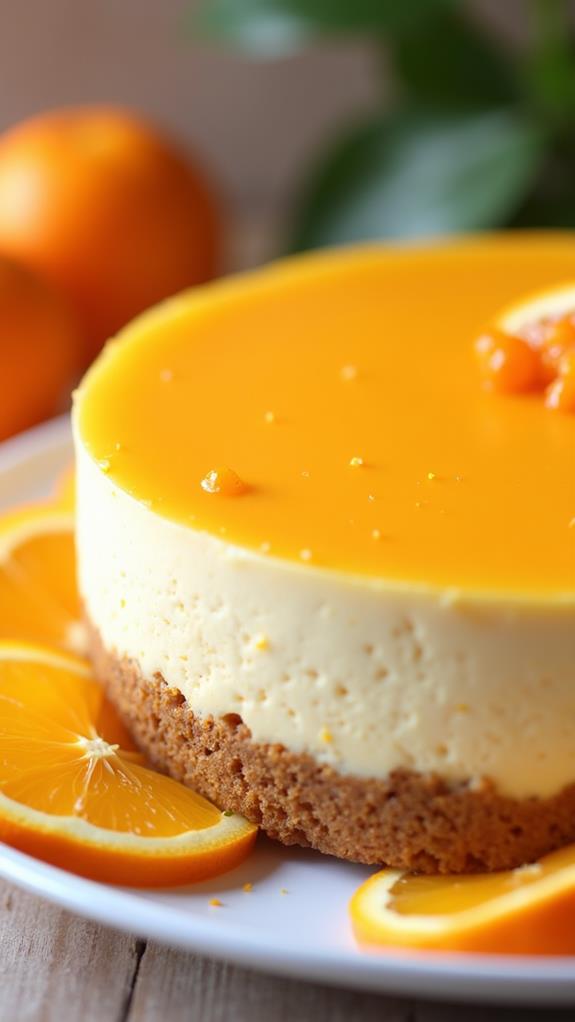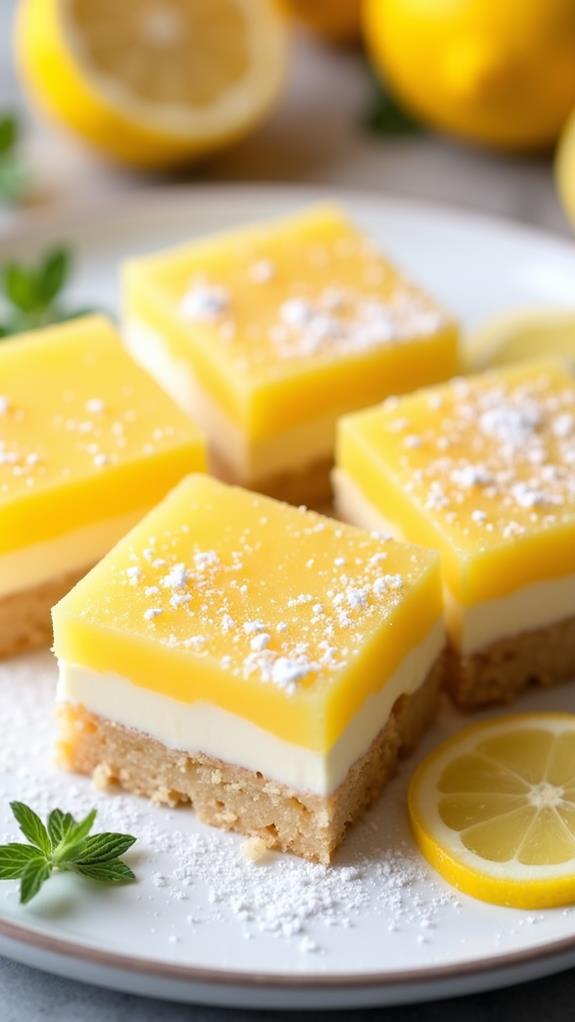The Perfect White Cake Recipe
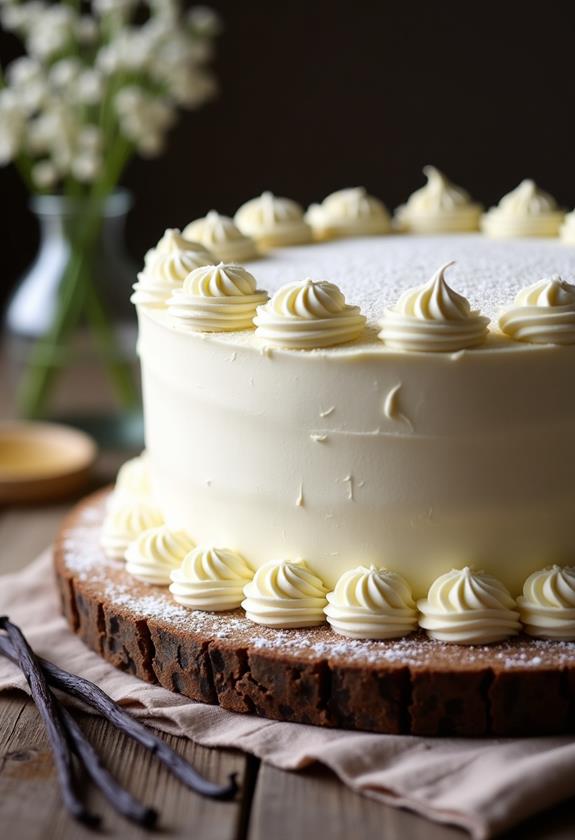
When you think about crafting the perfect white cake, it's tempting to jump straight into mixing flour and sugar, but have you considered the impact of ingredient temperature on texture? The secret lies in balancing simple components like all-purpose flour and egg whites, while ensuring each is at just the right state. You might think baking at 350°F is straightforward, but there's a subtle art to achieving that light, fluffy crumb. Have you ever wondered about the role of preparing your cake pans or how to avoid common pitfalls? Let's explore these nuances together.
Recipe
To create a perfect white cake, begin by verifying all your ingredients are at room temperature. This will help your batter mix more evenly and result in a smoother cake texture. Preheat your oven to 350°F (175°C) and prepare two 9-inch round cake pans by greasing them thoroughly.
In a large mixing bowl, cream together 3/4 cup of softened unsalted butter with 1 3/4 cups of granulated sugar until the mixture is light and fluffy. Slowly incorporate 6 large egg whites, adding them one at a time and beating well after each addition. Stir in 2 teaspoons of vanilla extract for added flavor.
In a separate bowl, combine 2 1/2 cups of all-purpose flour, 2 teaspoons of baking powder, and 1/2 teaspoon of salt. Gradually add this dry mixture to the creamed butter mixture, alternating with 1 cup of whole milk, beginning and ending with the dry ingredients. Mix until just combined to avoid overmixing, which can make the cake dense.
Divide the batter evenly between the prepared cake pans and smooth the tops. Bake in the preheated oven for 25-30 minutes or until a toothpick inserted into the center comes out clean. Let the cakes cool in the pans for 10 minutes before transferring them to wire racks to cool completely.
Ingredients:
- 2 1/2 cups all-purpose flour
- 1 3/4 cups granulated sugar
- 3/4 cup unsalted butter, softened
- 1 cup whole milk
- 6 large egg whites
- 2 teaspoons baking powder
- 1/2 teaspoon salt
- 2 teaspoons vanilla extract
Once your cakes are cooled, you can frost them with your choice of frosting or fillings. For the best results, verify that your frosting is at room temperature for easy spreading.
If you want to add a hint of almond flavor, incorporate 1 teaspoon of almond extract along with the vanilla extract. Remember to check your cakes for doneness using a toothpick, as oven temperatures can vary. For an even bake, rotate your cake pans halfway through the baking time.
Enjoy your beautifully baked white cake, perfect for any occasion.
Cooking Steps
Let's get started on your perfect white cake by preheating your oven to 350°F—think of it as warming up for a baking marathon.
Begin by creaming the butter and sugar until they're as fluffy as a cloud, then gradually add the egg whites, making sure you don't rush them like a last-minute homework assignment.
Sift your dry ingredients together for a smooth blend, and alternate adding them with milk to the butter mix, starting and ending with the dry stuff—it's like the cake version of a dance-off!
Step 1. Preheat Oven to 350°F
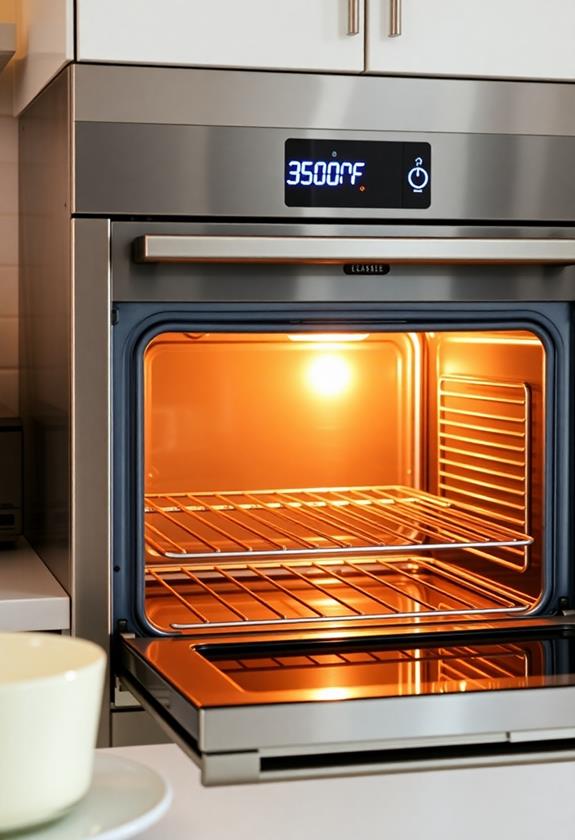
Preheating your oven to 350°F (175°C) is an essential first step in ensuring your white cake bakes evenly and achieves the perfect texture. You wouldn't want a cake that's golden on the outside and mushy in the middle, right?
So, before you start mixing ingredients, turn that oven dial. Give it about 10-15 minutes; ovens can be a bit like old friends—they might need a little extra time to warm up!
Use an oven thermometer if you're feeling fancy, or just trust your oven's preheating light. This step might seem small, but it sets the stage for baking success.
Plus, it's a great excuse to sneak in a quick dance break or check on your favorite show while you wait!
Step 2. Cream Butter and Sugar
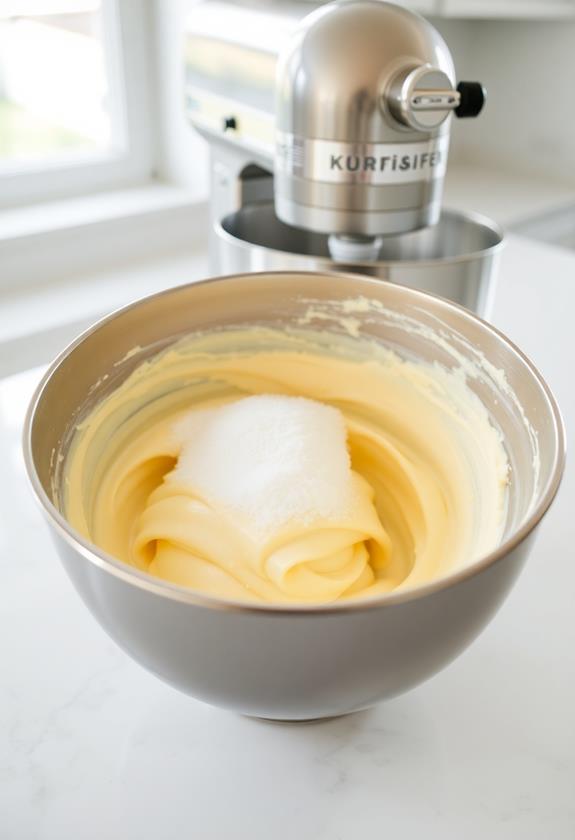
The magic of a perfect white cake begins with the creaming of butter and sugar. Grab your softened butter and granulated sugar, and get ready to work a little magic with your mixer.
You're aiming for a light, fluffy mixture that looks like it's bursting with tiny air pockets. This step isn't just about mixing; it's where the cake starts to get its airy texture.
Use a medium speed and keep an eye on the color, aiming for a pale yellow. If your butter and sugar start chatting like old friends and clinging to the bowl, you're doing it right!
Step 3. Add Egg Whites Gradually
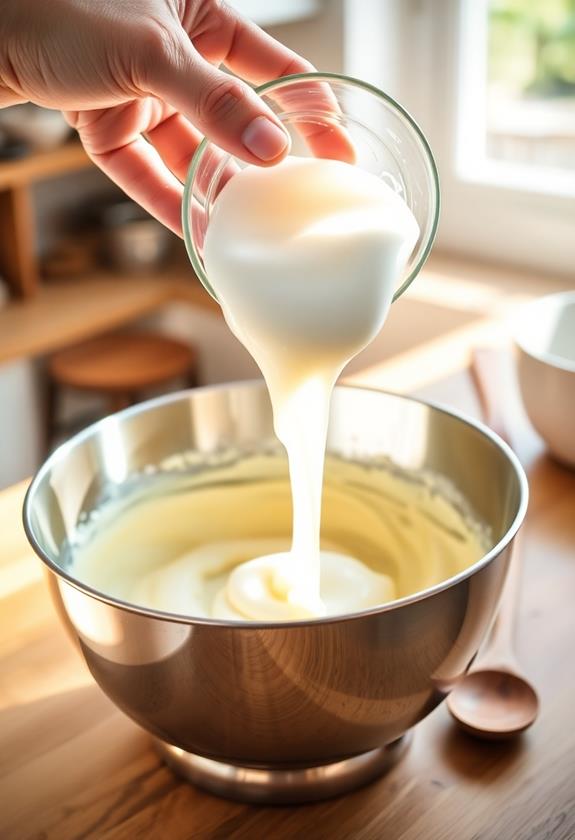
After achieving that perfect light and fluffy mixture of butter and sugar, it's time to bring in the egg whites.
Now, be gentle and patient! Add the egg whites gradually, one at a time, while continuously mixing. It might feel a bit like babysitting, but trust me, it's worth it. Each addition should be fully incorporated before you add the next.
This slow process helps maintain that airy texture we're aiming for. It's like giving your cake batter a pep talk—encouraging it to rise to the occasion!
Also, don't forget to scrape down the sides of the bowl occasionally, ensuring a smooth blend. With each egg white, imagine your cake getting fluffier and fluffier.
You've got this!
Step 4. Sift Dry Ingredients Together
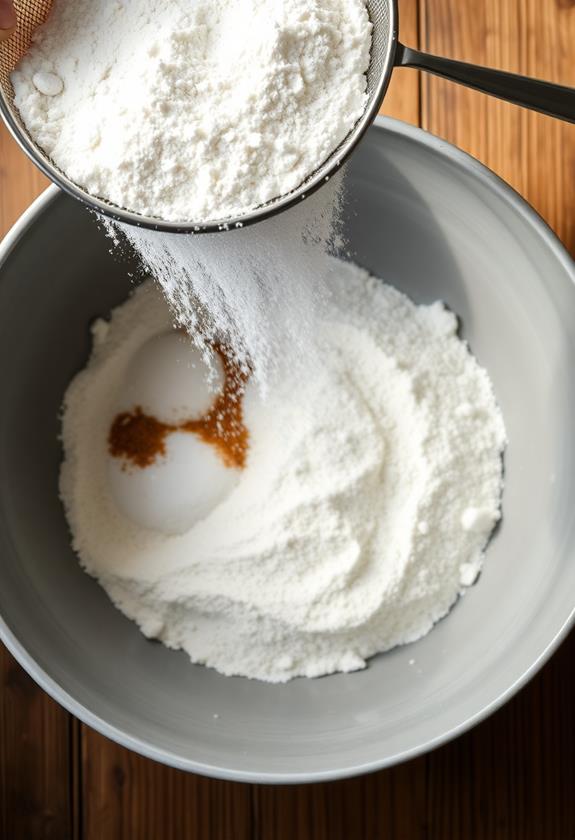
Precision is key when it comes to sifting the dry ingredients together. Grab your sifter or a fine-mesh sieve, and let's get to work!
Combine the flour, baking powder, and salt in a bowl. Now, channel your inner cake wizard and sift these ingredients together.
Why sift, you ask? It's all about aeration and guaranteeing your cake has that light, fluffy texture. Plus, it catches any sneaky lumps that might be lurking.
As you sift, imagine mixing magic dust, making your cake even more amazing. Remember, don't rush this step—patience is your friend.
Once everything's sifted, give the bowl a gentle shake to confirm it's all mixed. Voilà, your dry ingredients are ready to meet their wet companions!
Step 5. Alternate Milk and Dry Ingredients
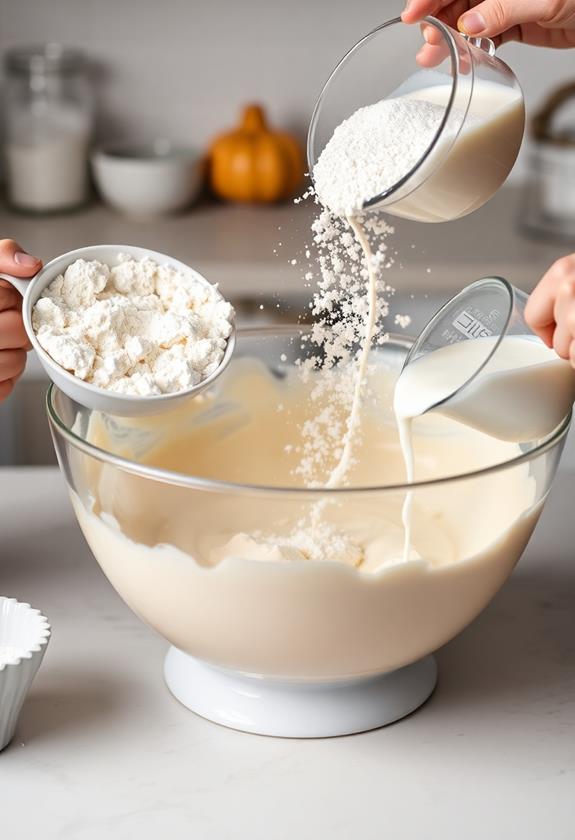
Now comes the important step of combining the ingredients to create a smooth batter.
Start by alternating between adding the dry ingredients and the milk into your butter mixture. This dance of flour, baking powder, salt, and milk guarantees a balanced blend.
Add about a third of the dry mix first, stirring gently, then pour in half of the milk. Repeat this process, finishing with the dry ingredients.
This method keeps your batter light and avoids lumps, so don't rush it! Remember, overmixing could turn your cake into a dense brick, and nobody wants that.
Channel your inner baker, mix with love and purpose, and soon you'll have a batter so smooth it'll make you grin.
Happy baking!
Final Thoughts
Why not take a moment to appreciate the simplicity and elegance of a perfectly baked white cake?
It's a masterpiece of minimalism, where each ingredient plays its part. You've whisked, folded, and baked your way to a delightful dessert that's both classic and versatile.
Remember, practice makes perfect, so don't be afraid to experiment with flavors and decorations. Maybe add a zesty lemon frosting or a rich chocolate ganache next time.
You've mastered a skill that'll certainly impress at gatherings or simply satisfy your sweet cravings.
So, go ahead, cut yourself a slice, and relish the fruits of your labor. After all, baking isn't just about the end result—it's about the joy and satisfaction along the way.
Enjoy your cake adventure!
Frequently Asked Questions
Can I Substitute All-Purpose Flour With Cake Flour for a Lighter Texture?
Yes, you can substitute all-purpose flour with cake flour for a lighter texture. Use 1 cup plus 2 tablespoons of cake flour for every cup of all-purpose flour. Cake flour makes the cake more tender and soft.
How Can I Make This White Cake Gluten-Free?
You can make this white cake gluten-free by substituting all-purpose flour with a gluten-free flour blend. Verify it contains xanthan gum for structure. Follow the same recipe steps and enjoy a delicious gluten-free treat.
What Is the Best Way to Store Leftover White Cake?
To store leftover white cake, wrap it tightly in plastic wrap or place it in an airtight container. Keep it at room temperature for up to three days or refrigerate if you want it to last longer.
Can I Use a Different Type of Milk, Like Almond or Oat Milk?
You can substitute almond or oat milk for whole milk in your recipe. Just remember, it might slightly alter the cake's texture and flavor. Test a small batch first to see how the cake turns out.
How Do I Prevent My Cake From Sticking to the Pans?
To prevent your cake from sticking, grease the pans thoroughly with butter or non-stick spray, then line them with parchment paper. Guarantee the paper fits snugly. This creates a barrier, making cake removal effortless. Enjoy baking!

